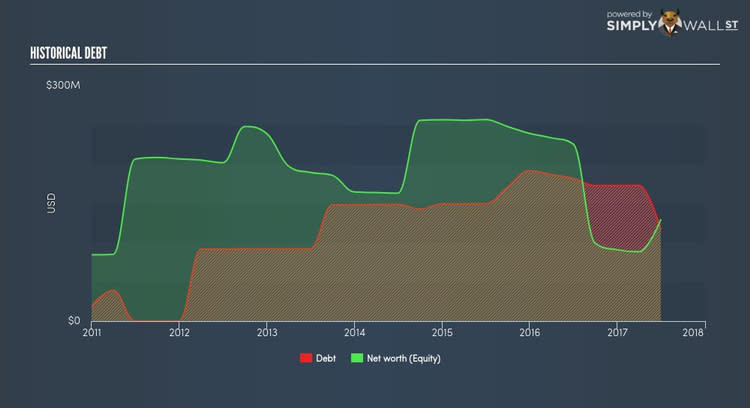Diana Containerships Inc (DCIX): Time For A Financial Health Check

Investors are always looking for growth in small-cap stocks like Diana Containerships Inc (NASDAQ:DCIX), with a market cap of USD $1.20M. However, an important fact which most ignore is: how financially healthy is the company? The significance of doing due diligence on a company’s financial strength stems from the fact that over 20,000 companies go bankrupt in every quarter in the US alone. Thus, it becomes utmost important for an investor to test a company’s resilience for such contingencies. In simple terms, I believe these three small calculations tell most of the story you need to know. Check out our latest analysis for Diana Containerships
How does DCIX’s operating cash flow stack up against its debt?
While failure to manage cash has been one of the major reasons behind the demise of a lot of small businesses, mismanagement comes into the light during tough situations such as an economic recession. Furthermore, failure to service debt can hurt its reputation, making funding expensive in the future. Fortunately, we can test the company’s capacity to pay back its debtholders without summoning any catastrophes by looking at how much cash it generates from its current operations. In the case of DCIX, operating cash flow turned out to be -0.13x its debt level over the past twelve months. This means what DCIX can generate on an annual basis, which is currently a negative value, does not cover what it actually owes its debtors in the near term. This raises a red flag, looking at DCIX’s operations at this point in time.
Can DCIX pay its short-term liabilities?
What about its commitments to other stakeholders such as payments to suppliers and employees? In times of adverse events, DCIX may need to liquidate its short-term assets to pay these immediate obligations. We should examine if the company’s cash and short-term investment levels match its current liabilities. Our analysis shows that DCIX does have enough liquid assets on hand to meet its upcoming liabilities, which lowers our concerns should adverse events arise.
Can DCIX service its debt comfortably?
While ideally the debt-to equity ratio of a financially healthy company should be less than 40%, several factors such as industry life-cycle and economic conditions can result in a company raising a significant amount of debt. In the case of DCIX, the debt-to-equity ratio is 90.79%, which indicates that the company is holding a high level of debt relative to its net worth. In the event of financial turmoil, the company may experience difficulty meeting interest and other debt obligations.
Next Steps:
Are you a shareholder? DCIX’s high debt level indicates room for improvement. Furthermore, its cash flow coverage of less than a quarter of debt means that operating efficiency could also be an issue. In addition to this, the company may not be able to pay all of its upcoming liabilities from its current short-term assets. Moving forward, DCIX’s financial situation may change. You should always be keeping on top of market expectations for DCIX’s future growth on our free analysis platform.
Are you a potential investor? DCIX’s high debt levels along with low cash coverage of debt as well as low liquidity coverage of near-term commitments may send potential investors running the other way. But, keep in mind that this is a point-in-time analysis, and today’s performance may not be representative of DCIX’s track record. I encourage you to continue your research by taking a look at DCIX’s past performance analysis on our free platform to conclude on DCIX’s financial health.
To help readers see pass the short term volatility of the financial market, we aim to bring you a long-term focused research analysis purely driven by fundamental data. Note that our analysis does not factor in the latest price sensitive company announcements.
The author is an independent contributor and at the time of publication had no position in the stocks mentioned.

